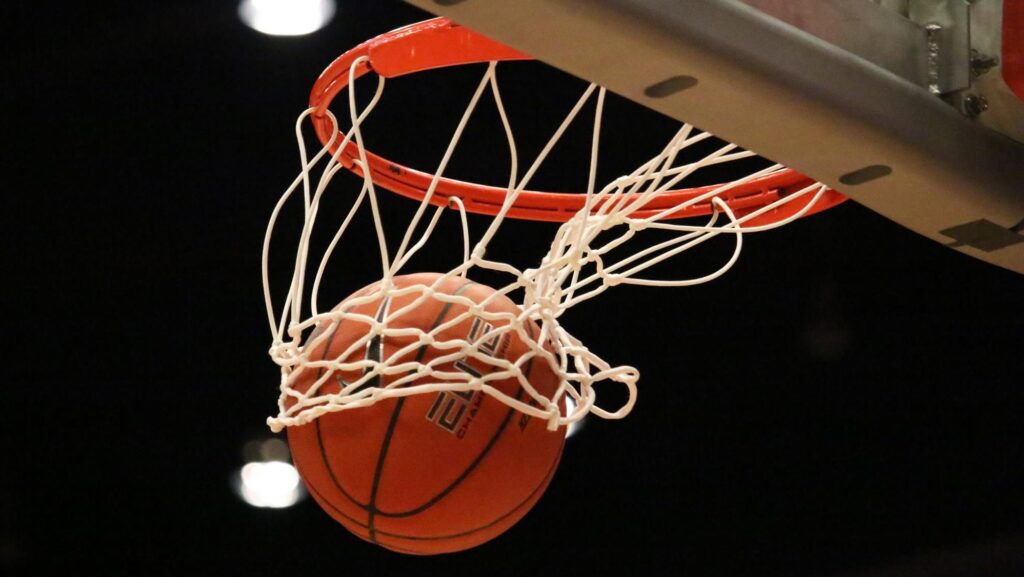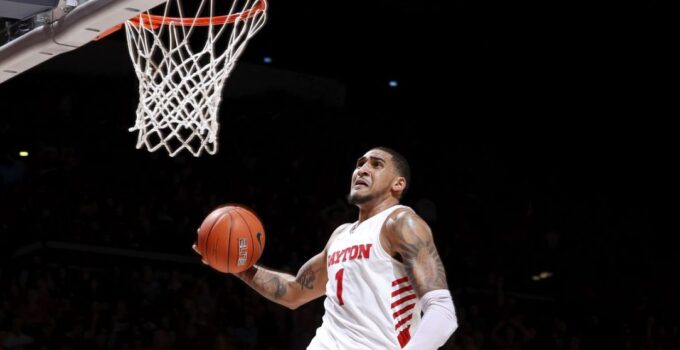Basketball is a great team game. It helps students learn teamwork skills. Created originally as a winter sport, basketball requires players to become highly skilled to win their team victory. Whether you play basketball professionally or as a hobby it’s a great way of keeping fit. Of five players on each side, basketball encourages social skills as well as athleticism. Good communication is an important part of a successful team. Basketball also helps relieve stress from academic pressures that most students feel.
Basketball was invented in 1891 by Canadian, physical education instructor, James Naismith who was living in Massachusetts. He was asked to come up with a sport that would not be as dangerous as football and would keep athletes entertained, indoors during the cold winter months.
It started with two peach baskets attached to a 10-foot-high railing and a soccer ball. It included elements of already popular games, such as American football, hockey, and soccer. Teams consisted of nine players. By the turn of the century, five players per team became standard. Players dribbled a soccer ball on an unmarked pavement, and teams earned points by throwing the ball into peach baskets, eventually replaced by iron hoops and loosely-braided pockets. So that players no longer had to manually retrieve balls from the pockets, open-ended nets were introduced at the beginning of the 20 the century. Between 1893 and 1895 basketball became popular in many colleges.

Source: sciaa.digitalsports.com
lines.com reports that in 1892 he gave the game of basketball a set of 13 rules.
- The ball may be thrown in any direction with one or both hands.
- The ball may be batted in any direction with one or both hands (never with the fist).
- A player cannot run with the ball. The player must throw it from the spot on which he catches it, an allowance to
- be made for a man who catches the ball when running at a good speed if he tries to stop.
- The ball must be held in or between the hands; the arms or body must not be used for holding it.
- No shouldering, holding, pushing, tripping, or striking in any way the person of an opponent shall be allowed; the first infringement of this rule by any player shall count as a foul, the second shall disqualify him until the next goal is made, or, if there was evident intent to injure the person, for the whole of the game, no substitute allowed.
- A foul is striking at the ball with the fist, violation of Rules 3 and 4, and such as described in Rule 5.
- If either side makes three consecutive fouls, it shall count as a goal for the opponents (consecutive means without the opponents in the meantime making a foul).
- A goal shall be made when the ball is thrown or batted from the grounds into the basket and stays there, providing those defending the goal do not touch or disturb the goal. If the ball rests on the edges, and the opponent moves the basket, it shall count as a goal.
- When the ball goes out of bounds, it shall be thrown into the field of play by the person first touching it. In case of a dispute, the umpire shall throw it straight into the field. The thrower-in is allowed five seconds; if he holds it longer, it shall go to the opponent. If any side persists in delaying the game, the umpire shall call a foul on that side.
- The umpire shall be the judge of the men and shall note the fouls and notify the referee when three consecutive fouls have been made. He shall have the power to disqualify men according to Rule 5.
- The referee shall be the judge of the ball and shall decide when the ball is in play, in bounds, to which side it belongs, and shall keep the time. He shall decide when a goal has been made, and keep account of the goals with any other duties that are usually performed by a referee.
- The time shall be two 15-minute halves, with five minutes’ rest between.
The side making the most goals in that time shall be declared the winner. In case of a draw, the game may, by agreement of the captains, be continued until another goal is made.
The original game played under these rules as you can tell was massively different from the one played today as there was no dribbling, dunking, shot clock, or three-pointers and goaltending was legal. The first time restriction on possession of the ball was introduced in 1933. Teams then were required to advance the ball over the center line within ten seconds of gaining possession. This rule remained until 2000, when FIBA reduced the requirement to eight seconds, the NBA following suit in 2001. The NCAA retains the 10-second rule for men’s play, and adopted this rule for women’s play starting with the 2013–14 season.U.S. high schools, whose rules are drafted by NFHS, also use the 10-second rule for both sexes.
Nowadays the sport is played around the world and has a major benefit not mentioned before. There is no extensive equipment needd to play the game which makes it as an attractive proposition to kids as soccer all round the world. For spectators, it’s a great occasion to sit in a crowded room and enjoy hotdogs and the atmosphere as local teams battle it out. As with other major sports, basketball has its superstars who have excelled in the game and their posters adorn the walls of kids bedrooms in many countries. Joking apart, if you are the tallest student in the class you’re made for the sport as salm dunking will come easier for you.




